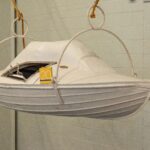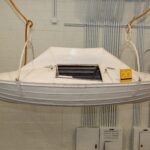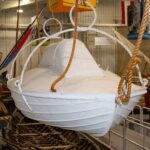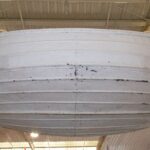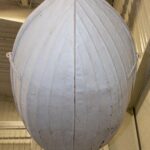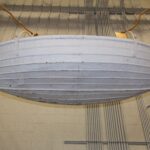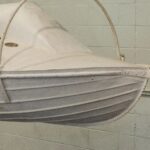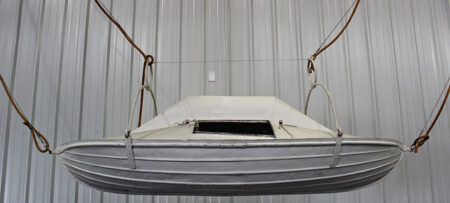Lifecar
Watercraft
Effect: Materials
Type: Rescue
Composition: Metal
Place: North America
In 1845, Joseph Francis patented the galvanized iron lifecar for rescuing shipwreck victims.
Lifecar, mid- 19th century
Patented by Joseph Francis
Toms River, New Jersey
Courtesy of the United States Coast Guard
In 1845, Joseph Francis patented the galvanized iron lifecar for rescuing shipwreck victims. After a line was fired out to a foundering ship, men from the Lifesaving Service could pull the lifecar between ship and shore. The metal made it durable in stormy seas, where it might strike the ship or plunge underwater. But it was also heavy and often difficult to control.
Two to four people at a time could be hauled ashore in the lifecar. Tiny holes in the surface prevented the passengers from suffocating during the harrowing trip to shore.
To be shut up in this manner is so dark and gloomy a receptacle, for the purpose of being drawn, perhaps at midnight, through a surf of such terrific violence that no boat can live in it, can not be a very agreeable alternative; but the emergencies in which the use of the life-car is called for, are such as do not admit of hesitation or delay. – J.H. Merryman, Scribner’s Monthly, 1880
Origin: New Jersey, Toms River, USA
